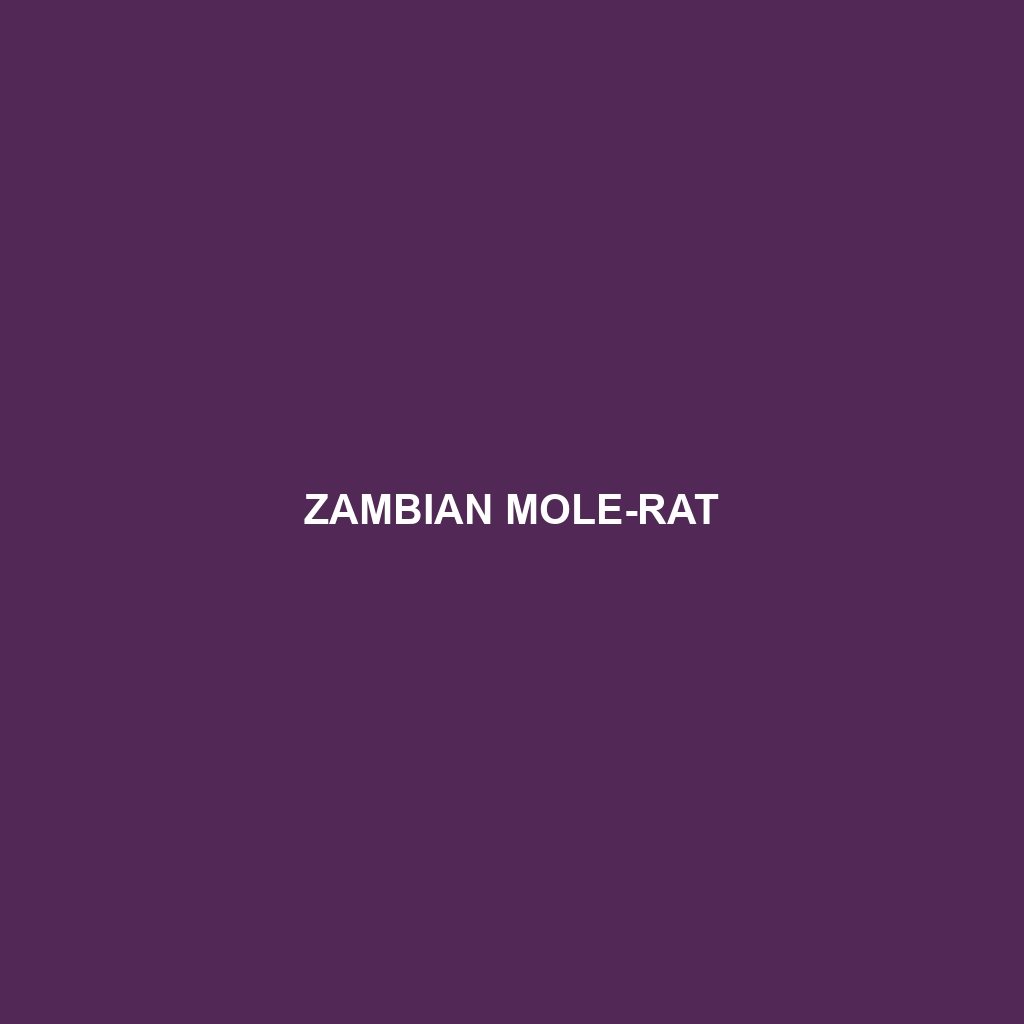Zambian Mole-rat
Common Name: Zambian Mole-rat
Scientific Name: Fukomys ansellii
Habitat
The Zambian mole-rat is primarily found in the grasslands and scrublands of Zambia, particularly in the regions around the Luangwa Valley and surrounding plateaus. These rodents prefer well-drained soils that facilitate their burrowing activities and are commonly located near water sources like rivers and wetlands. Additionally, they can be found in open areas with rich vegetation that provide both shelter and food.
Physical Characteristics
The Zambian mole-rat typically measures between 20 to 30 centimeters in length and weighs around 500 grams. They have a cylindrical body covered in coarse, brownish fur which aids in their burrowing lifestyle. Their elongated snouts and small, hidden eyes are distinctive features, along with strong and large front claws that enable them to dig efficiently in soil. Notably, their non-visible ears contribute to their specialized adaptations for a burrowing life.
Behavior
Zambian mole-rats are predominantly nocturnal creatures, primarily active during the night. They live in complex burrow systems that can extend over large areas, which they share as a colony. Social behavior is common in this species, where they engage in cooperative activities such as foraging and raising young together. Their communication includes signalling through touch and vocalizations, displaying a unique social structure.
Diet
The diet of the Zambian mole-rat mainly consists of underground plant parts such as tubers, roots, and bulbs, reflecting their herbivorous nature. They have a preference for the nutritious parts of plants, which serve as a primary food source. Their foraging habits allow them to play a significant role in the aeration of soil and nutrient cycling, contributing to their ecosystem.
Reproduction
Zambian mole-rats exhibit polygynous mating systems, where one male mates with multiple females. Breeding usually occurs in late rainy seasons to ensure sufficient food for the offspring. The gestation period lasts about 60 days and typically results in 2 to 6 pups, which are born blind and hairless before becoming independent after several weeks.
Conservation Status
The conservation status of the Zambian mole-rat is currently classified as Least Concern according to the IUCN Red List. However, habitat destruction and environmental changes could pose future threats to their populations, emphasizing the need for ongoing monitoring and conservation efforts.
Interesting Facts
One fascinating aspect of the Zambian mole-rat is that they have a highly specialized system of communication involving vibrational signals transmitted through the ground. Additionally, their burrowing activities can significantly impact the environment by enhancing soil structure, making them pivotal to their habitat’s ecology.
Role in Ecosystem
The Zambian mole-rat plays a crucial role in its ecosystem as both a herbivore and a soil engineer. By digging and aerating the soil, they facilitate plant growth and contribute to nutrient cycling. Furthermore, as prey for larger predators, they are an integral part of the food web, affecting various trophic levels within their environment.
